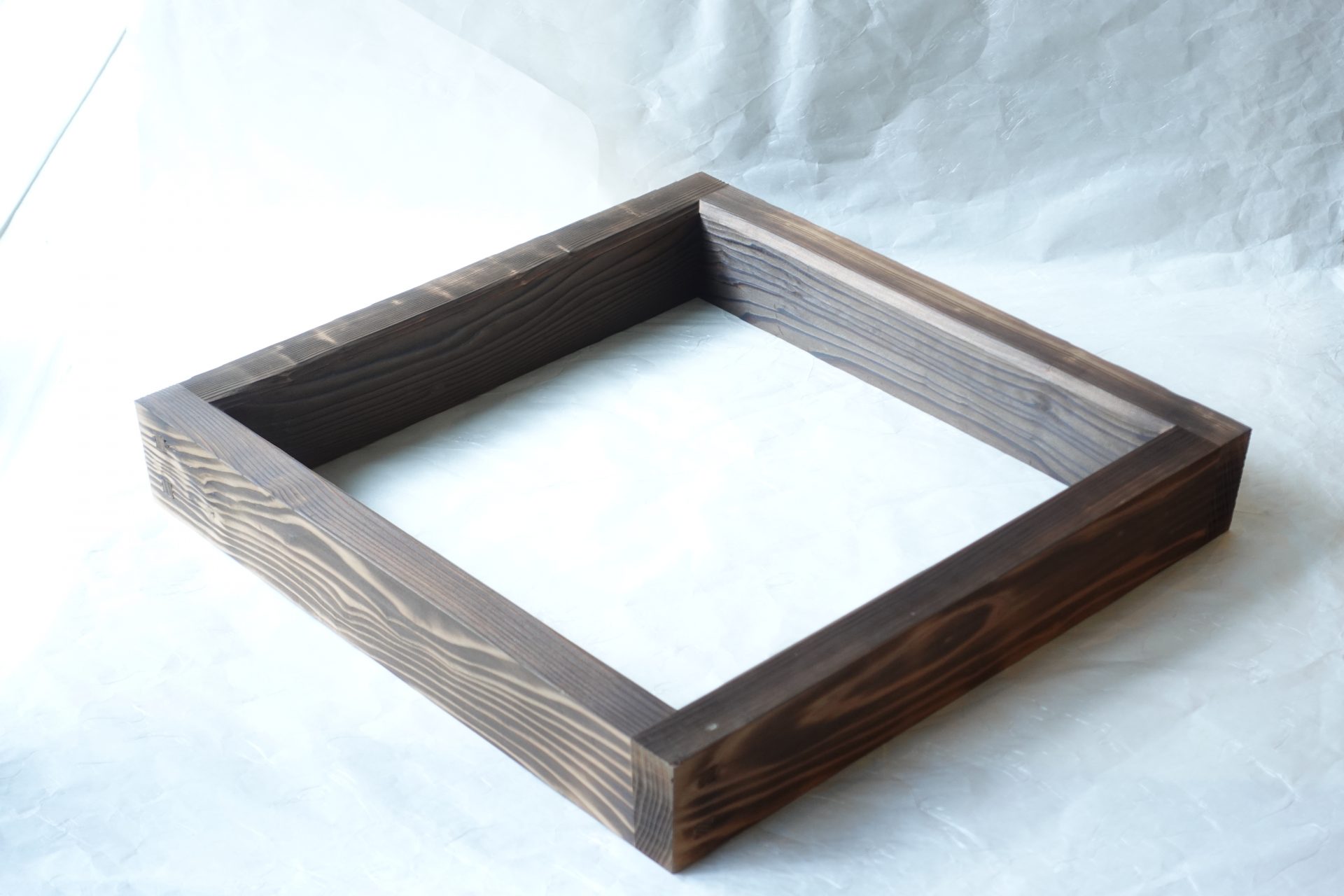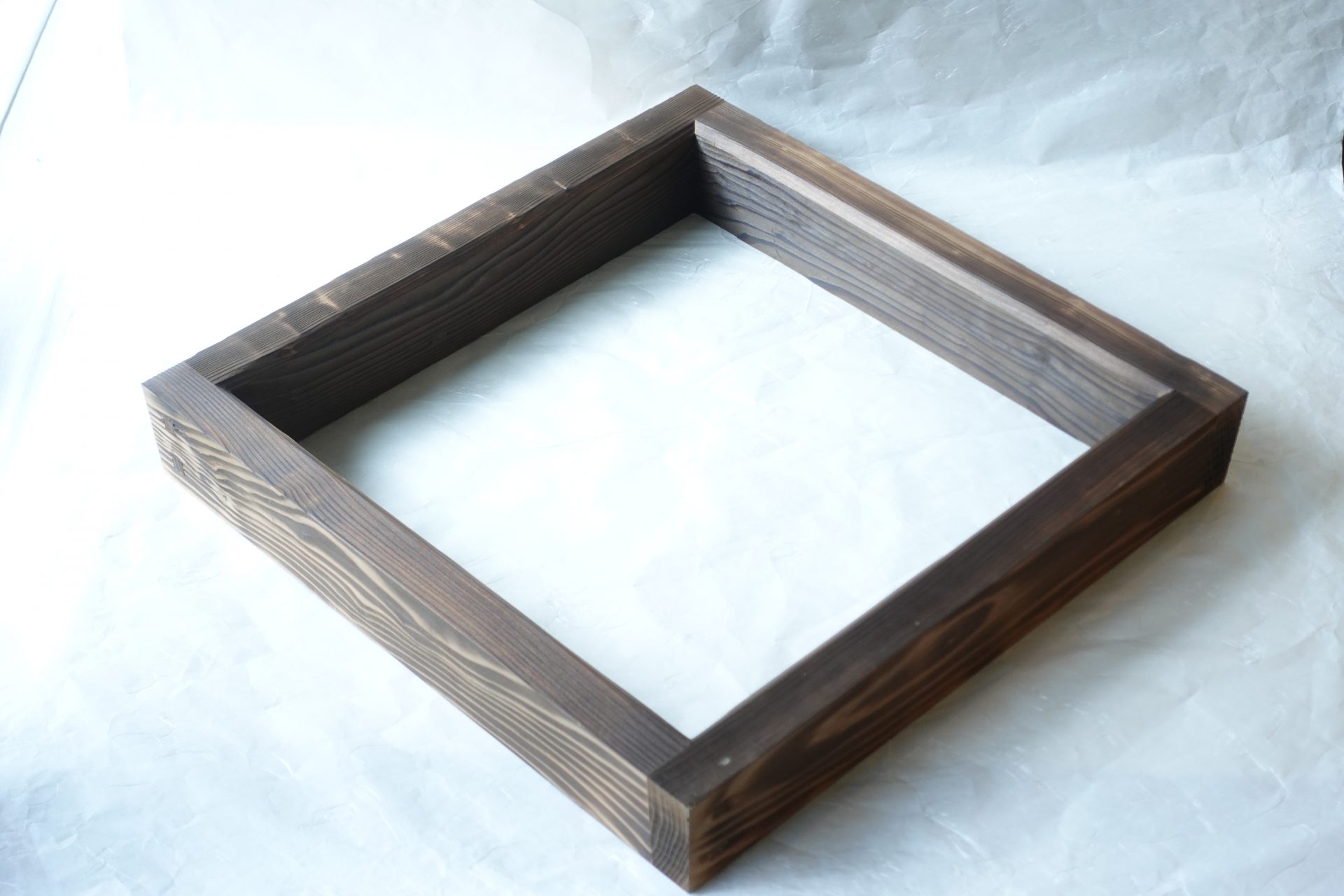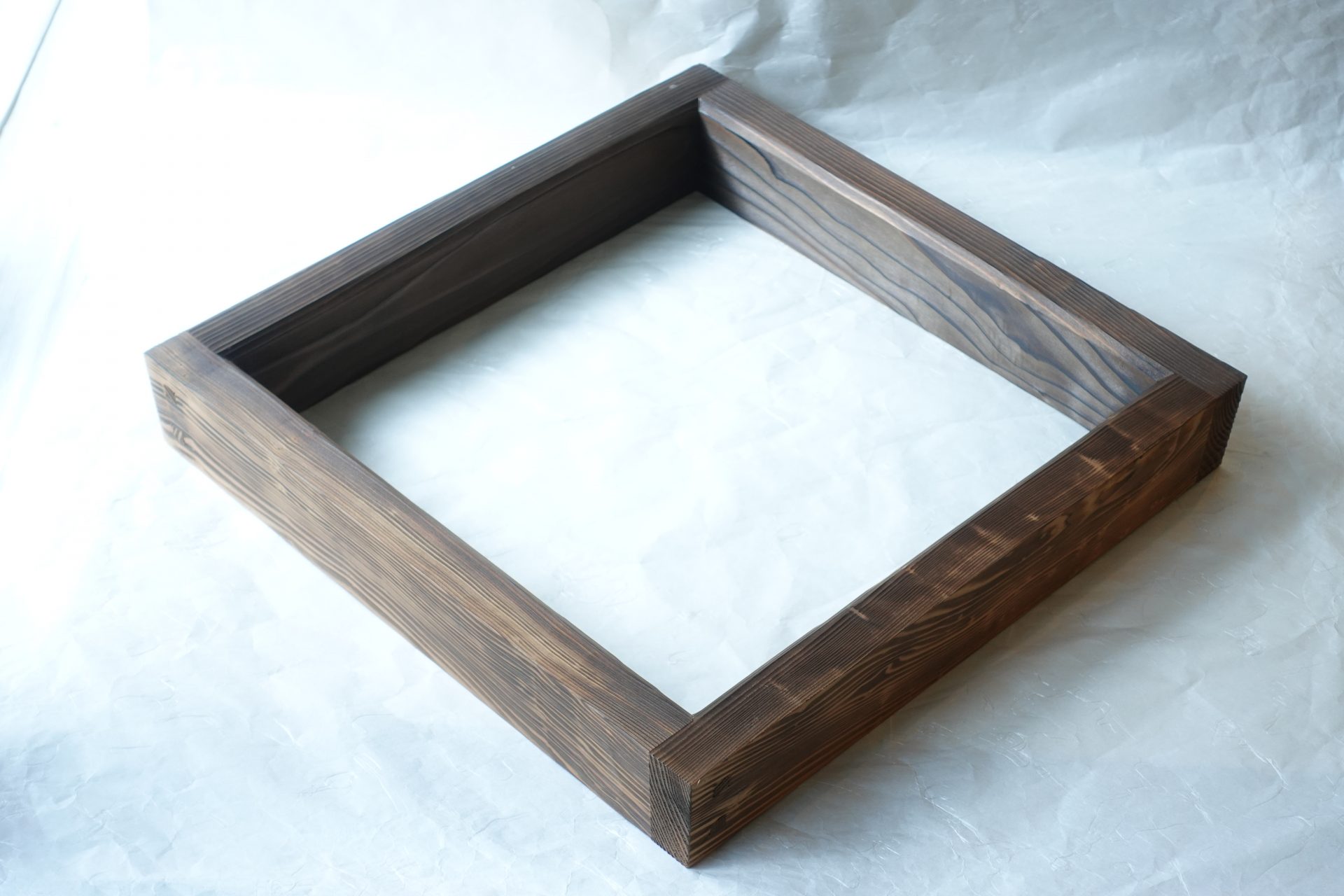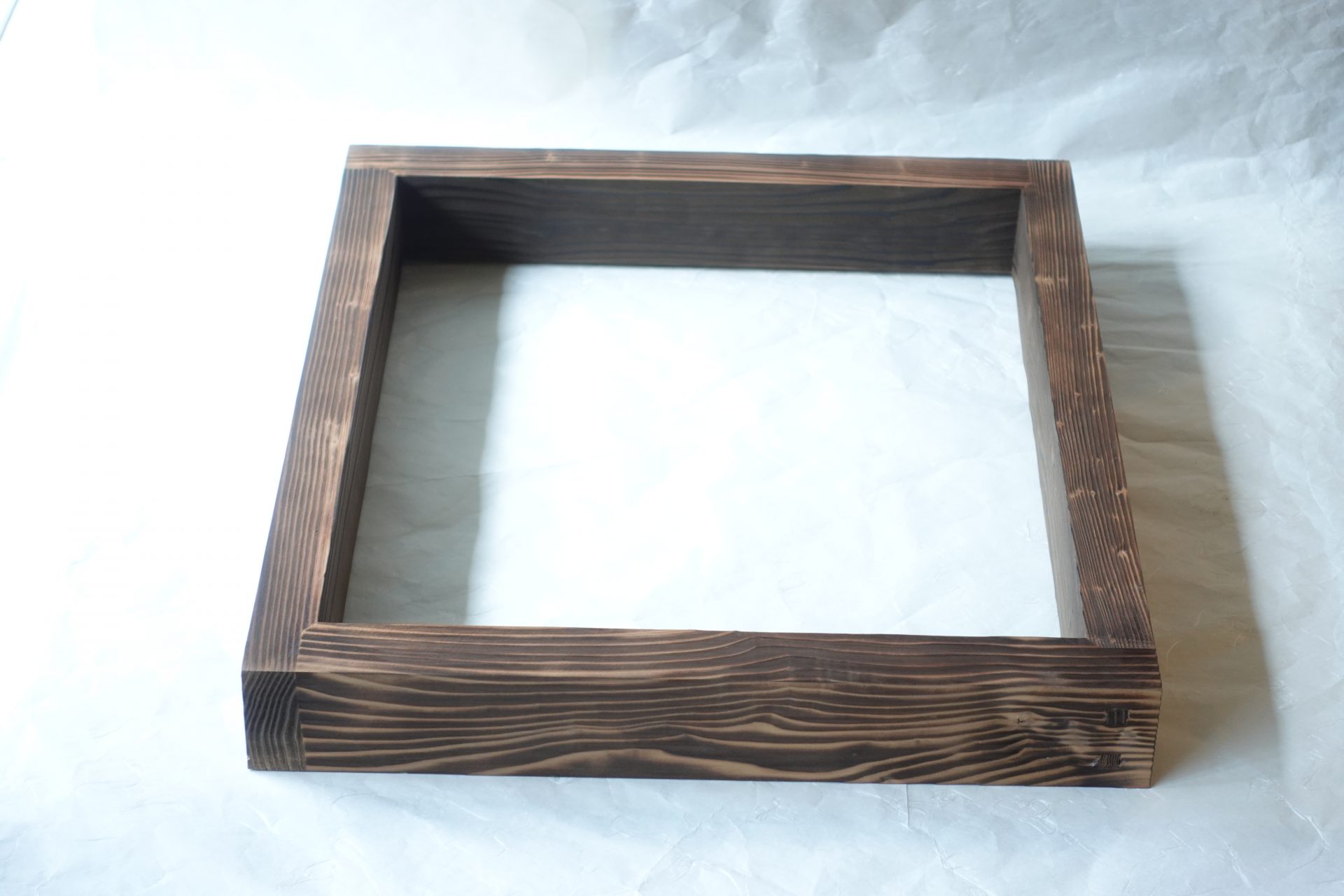日本製の焼杉の炉縁(ろぶち)のご紹介です。
炉縁とは茶道で使う炉の炭櫃(すびつ)の上にはめる木の枠のことです。
畳に火気が伝わるのを防ぐためと、装飾の意味があります。
炉縁には様々な種類のものがありますが、こうした木地の炉縁は
主に小間(こま)で使われます。
小間は、四畳半以下の座敷をいい、広間を「書院」とすれば
小間は「草庵」となります。
「草庵」とは本来は藁(わら)や草で葺いた粗末な田舎家のことですが
のちに俗塵を払って清らかな境地に侘び住まう住居を指すようになりました。
茶の湯の理想とされる「侘び茶」が追求され、千利休の時代に草庵風茶室として
具現化され、形だけではなく茶の湯そのもののあり方や方式をも
意味するようになりました。
「草庵」は千利休が確立した「侘び茶」の代名詞といえます。
この炉縁は杉の木そのものを使い作られ、表面を軽く焼いてあります。
汚れが付いても目立たなかったり、侘びた雰囲気も出ています。
木目をあえて生かしてあるので、自然のままの凹凸やへこみがあったり、
木地そのものの風合いが感じられます。
正に「侘び茶」にはぴったりの雰囲気の炉縁となっています。
42.3㎝ × 42.3㎝ × 高さ 6.5㎝
木製
Made in Japan – Robuchi (Hearth Frame), Yakisugi (Charred Cedar)
This is an introduction to a Japanese-made robuchi crafted from yakisugi (charred cedar).
A robuchi is a wooden frame fitted over the su-bitsu (charcoal container) of the hearth used in the tea ceremony.
It serves both to prevent heat from reaching the tatami mats and as a decorative element.
There are many different types of robuchi, but wooden frames of this kind are
primarily used in koma (small tea rooms).
A koma refers to a tea room of four-and-a-half tatami mats or less.
If a larger room is called a shoin,
then a koma is considered a sōan.
The term sōan originally referred to a humble rural dwelling roofed with straw or grass,
but later came to denote a residence in which one lives in quiet simplicity,
free from worldly dust, in a pure and serene state of mind.
The ideal of the tea ceremony known as wabi-cha was pursued,
and in the time of Sen no Rikyū it was embodied in the sōan-style tea room.
It came to signify not only the physical form,
but also the philosophy and practices of the tea ceremony itself.
Sōan can be said to be synonymous with wabi-cha,
which was established by Sen no Rikyū.
This robuchi is made from solid cedar wood,
with the surface lightly charred.
Even if it becomes soiled, marks are less noticeable,
and it also conveys a subdued, rustic atmosphere.
The natural grain of the wood is intentionally preserved,
so there are organic irregularities and indentations,
allowing one to fully appreciate the inherent texture of the wood itself.
It truly has an atmosphere perfectly suited to wabi-cha.
Dimensions:
42.3 cm × 42.3 cm × Height 6.5 cm
Material: Wood
日本制 炉缘(炉框) 烧杉
这是日本制烧杉炉缘(ろぶち)的介绍。
所谓“炉缘”,
是茶道中安置在炉的炭柜(炭箱)上方的木制框架。
其作用一是防止火气传导至榻榻米,
二是兼具装饰意义。
炉缘的种类多样,
而这种以木胎本色制成的炉缘,
主要用于“小间”。
“小间”指四叠半以下的茶室空间,
若将宽敞的房间称为“书院”,
则小间便相当于“草庵”。
“草庵”原本是指以稻草或茅草覆盖的简朴乡间居所,
后来逐渐演变为
指摒弃俗世尘扰、
追求清净境界、
以侘寂之心安居的居所。
随着茶道所推崇的“侘茶”理念不断深化,
在千利休的时代,
“草庵风”茶室得以具体成形,
并不仅仅是空间形式,
更延伸为对茶汤本身的精神内涵与实践方式的象征。
可以说,“草庵”已成为
千利休所确立的“侘茶”的代名词。
这件炉缘采用整块杉木制作,
表面经过轻度烧制处理。
即便沾染污渍也不易显眼,
同时散发出朴素而侘寂的氛围。
刻意保留木纹原貌,
因此可见自然形成的起伏与凹陷,
能充分感受到木材本身的质感与风情。
可谓是一件
与“侘茶”精神完美契合的炉缘。
尺寸:
42.3厘米 × 42.3厘米 × 高6.5厘米
材质:
木制




